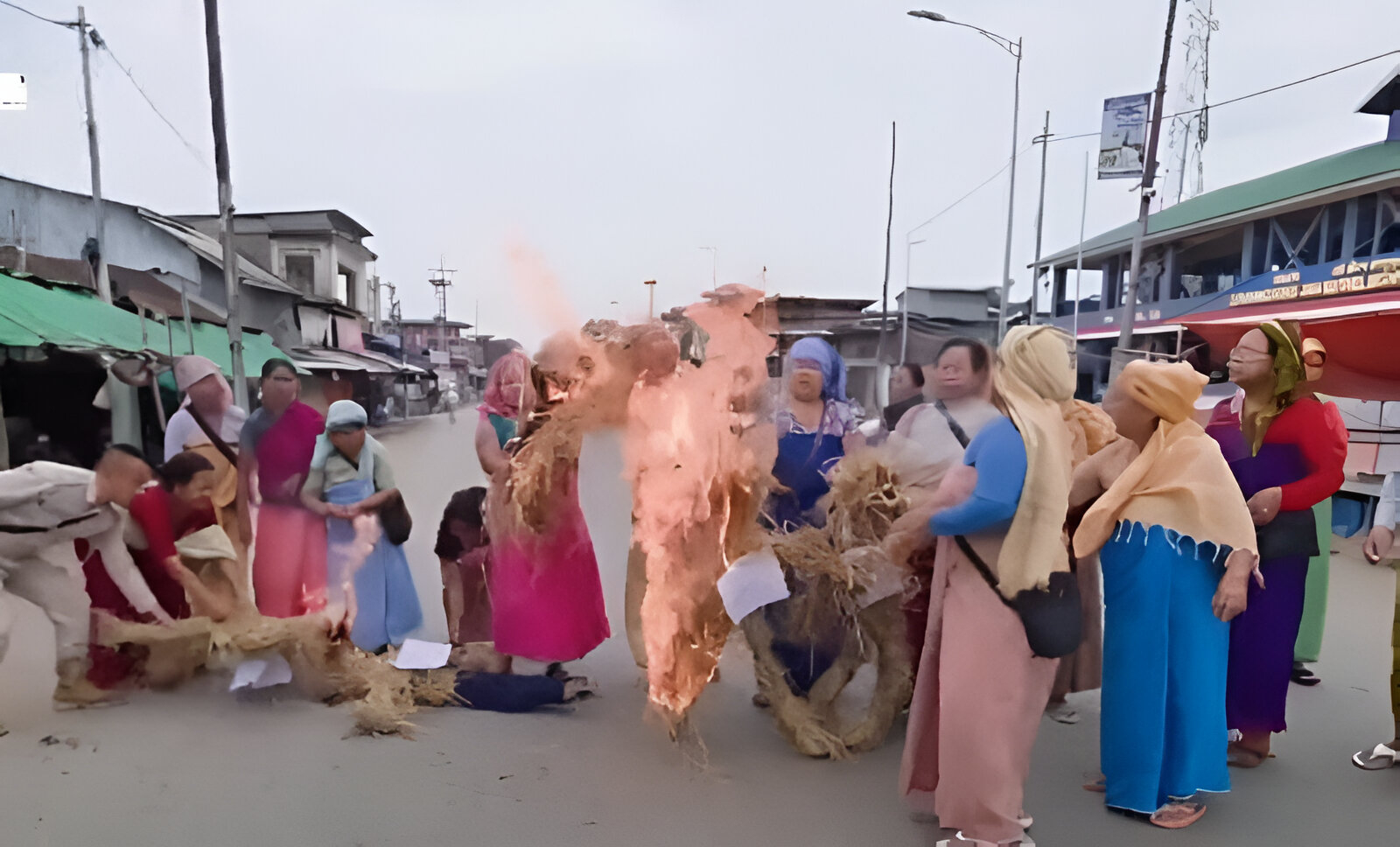Manipur’s 48-Hour Bandh: A Protest for Identity and Accountability
Quick News Summary
In May 2025, Manipur witnessed a significant 48-hour bandh, organized by the Coordinating Committee on Manipur Integrity (COCOMI). The protest was sparked by an incident where security forces allegedly removed the word “Manipur” from a government bus transporting journalists to the Shirui Lily Festival. This act was perceived as an affront to the state’s identity, leading to widespread demonstrations, including the burning of effigies of key political figures in Bishnupur. The bandh disrupted daily life across the state, highlighting deep-seated concerns over regional identity and governance.
Understanding the 48-Hour Bandh in Manipur
1. The Incident That Sparked the Bandh
On May 20, 2025, during the Shirui Lily Festival, a government-allocated bus transporting journalists had the word “Manipur” allegedly removed by security forces at the Gwaltabi checkpoint in Imphal East. This action was seen by many, especially COCOMI, as a direct attack on the state’s identity and pride.
2. COCOMI’s Role and Demands
COCOMI, a prominent Meitei organization, swiftly condemned the incident, labeling it as “anti-state” and “irresponsible.” They demanded the resignation of key officials, including the Union Home Minister, Manipur Governor, Chief Secretary, DGP, and the State Security Advisor, holding them accountable for the perceived affront.
3. The Bandh’s Impact on Daily Life
The 48-hour bandh brought Manipur to a standstill. Businesses, educational institutions, and public offices remained closed. Transportation services were disrupted, and streets were deserted. The bandh’s effect was felt deeply across the valley districts, emphasizing the community’s collective sentiment.
4. Effigy Burning in Bishnupur
In a dramatic display of dissent, protesters in Bishnupur burned effigies of the Union Home Minister, Governor, and other top officials. This act symbolized the community’s anger and demand for accountability. While police intervened during the effigy burning, no arrests were reported.
5. Government’s Response
In response to the escalating tensions, Manipur Governor Ajay Kumar Bhalla formed a two-member committee to investigate the incident. The committee was tasked with examining the circumstances surrounding the removal of the state’s name from the bus and suggesting measures to prevent such occurrences in the future.
6. Broader Implications
The bandh and the events leading up to it underscore the deep-rooted concerns over regional identity in Manipur. The state’s history of ethnic tensions and demands for autonomy have often led to protests and unrest. This incident serves as a reminder of the importance of cultural sensitivity and the need for inclusive governance.
Frequently Asked Questions (FAQs)
Q1: What led to the 48-hour bandh in Manipur?
A1: The bandh was a response to an incident where security forces allegedly removed the word “Manipur” from a government bus, which was perceived as an affront to the state’s identity.
Q2: Who organized the bandh?
A2: The Coordinating Committee on Manipur Integrity (COCOMI), a prominent Meitei organization, organized the bandh.
Q3: What were the main demands of the protesters?
A3: Protesters demanded the resignation of key officials, including the Union Home Minister and Manipur Governor, holding them accountable for the incident.
Q4: How did the bandh affect daily life in Manipur?
A4: The bandh led to the closure of businesses, educational institutions, and public offices, disrupting daily activities across the state.The Times of India
Q5: What steps did the government take in response?
A5: The Manipur Governor formed a two-member committee to investigate the incident and recommend preventive measures.



